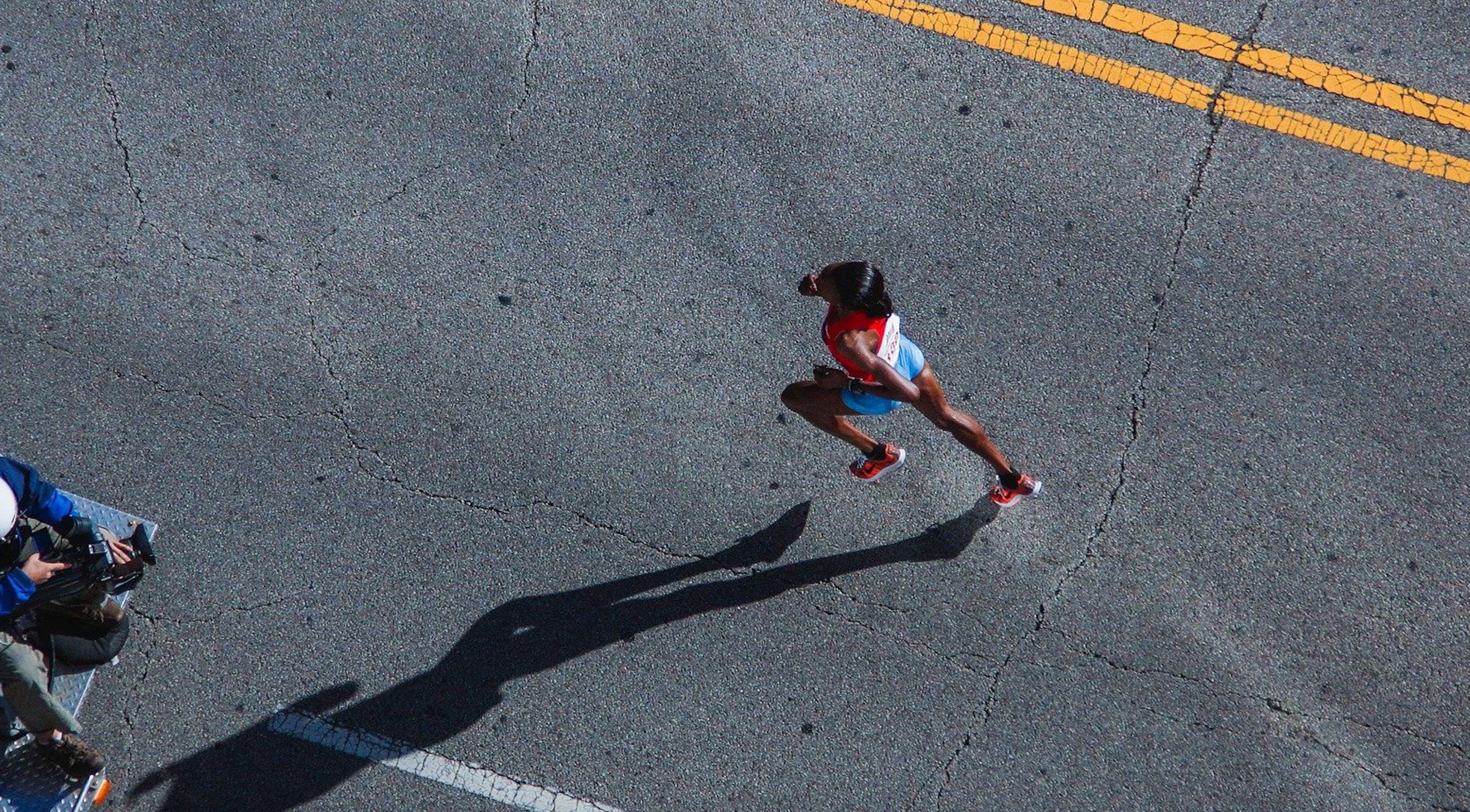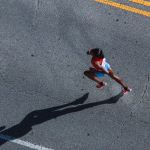When you see world-class runners run, it looks incredible, and you might feel tempted to try to mimick their style. You might be able to copy their style for a few hundred meters, or a kilometer or two, before you just slide back into your “good old” familiar running technique. But, once you start paying attention to one aspect of the running stride, you can often maintain it. For instance, leaning forward when running – it’s something elite runners do. But is this something that will benefit an amateur?
In short: no, not directly, anyway. According to experts it’s better not to suddenly start leaning forward when running. The forward lean should arise by itself due to your own momentum and should not be “forced.” A proper forward lean only comes from the right training.
It takes a lot of time and effort to change an aspect of your technique. To prevent injuries – which can be caused by even the slightest change – it’s important to slowly adapt to a new technique and work on your mobility and strength.
Maintaining a straight lean
When you try to slightly lean forward when running, you tend to bend at your hips. This creates an unusual posture that increases the risk of injuries. That’s because it pulls your back and hamstrings and therefore it will make running likely harder instead of easier. To avoid this, it’s important to make sure you always lean forward in a straight line from your ankles.
Speed and strength
To lean forward in a straight line, you need to have enough speed and strength. You will notice that, when running a 400-meter sprint, you will automatically lean forward. This won’t happen as much, or maybe not at all, during an easy endurance run. This means leaning forward is a direct result of speed.
Additionally, every runner will know that maintaining good technique is easy when you feel fit, but becomes a problem once fatigue kicks in. Strength training will help your body maintain the technique even when you’re tired. In this case, that means no slouching, or bending.
Your body will easily and naturally lean forward when it tries to find a certain moving balance. Because of the forward motion, your body is best balanced just before the middle of your body. A corresponding amount of speed is necessary to prevent you from falling over.
How do you practice leaning forward in running?
Since leaning forward is a result of speed and strength, this is where you will have to focus your training. The work you can do is all sorts of speed work, hill repeats, and running strides in which you extend your stride length and gain more speed with every step for about fifteen to twenty seconds.
By regularly running at a higher pace, you not only train your body to get used to leaning forward, you will also get faster and gain strength. Besides running, the latter can also be achieved by some separate strength training.
Be aware of your posture while running, and correct yourself when you notice your body isn’t leaning forward in a straight line anymore.


